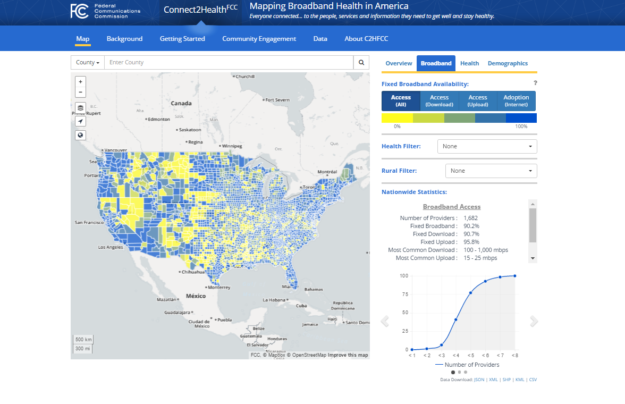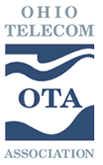Complete Story
08/03/2016
New FCC tool shows how broadband access impacts health
New FCC tool shows how broadband access impacts health
By giving the public a tool to compare health disparities with an area's broadband availability, the FCC wants to illustrate the impacts tech can have on well-being.

The Federal Communications Commission’s Connect2Health Task Force unveiled a new data-driven map Tuesday to help illustrate how health care and broadband issues correlate across America.
With the new online mapping tool, users can explore every American county’s health statistics and broadband strength, connecting the benefits of stronger broadband to the health of citizens in certain areas. Users can see percentages of Americans with obesity, preventable hospitalization or diabetes. States with issues in both categories turn a different color, making easy to identify the most troublesome states.
Users can download all of the tool's underlying data to use for other applications.
FCC Chairman Tom Wheeler, who spoke at the tool’s launch event at the Microsoft Innovation and Policy Center, believes it will showcase how health technology dependent on broadband, like teleheath or online diagnoses, will improve lives.
“This map can coordinate those kind of life-saving activities,” Wheeler said. “The map can help us focus on areas that need help. The map can direct resources.”
The data will allow experts to make fact-based decisions on broadband issues in health care, such as figuring out the best area to deploy new tech services or seeing which locations could take better advantage of its broadband, said FCC Commissioner Mignon Clyburn, who led the project.
For example, the data can specify which counties suffer from both poor broadband and high levels of diabetes, hoping to highlight the areas that need the most help.
“The mapping tool we unveiled today promises to provide a new and powerful road map for stakeholders to leverage high speed connectivity to improve the health of our nation,” Clyburn said. “It will help us to identify both gaps and opportunities, and empower us to connect bridges at the intersection of broadband and health precisely where they are needed.”
In areas with better broadband, there is often more health education, reduced chronic diseases, less hospital admittance and more psychiatric care, she said. With a higher percentage of internet access, more citizens can use health-related technology, whether it is ordering drugs online or receiving medical advice via the internet.
“The FCC’s mapping effort is historic — it is historic because it directly addresses the serious and growing challenge of ensuring that the transformative power of broadband in health is available to everyone and everywhere,” Clyburn said.
Contact the reporter on this story via email: Jeremy.Snow@FedScoop.com. Follow him on Twitter @JeremyM_Snow. Sign up for the Daily Scoop — all the federal IT news you need in your inbox every morning — here: fdscp.com/sign-me-on.


